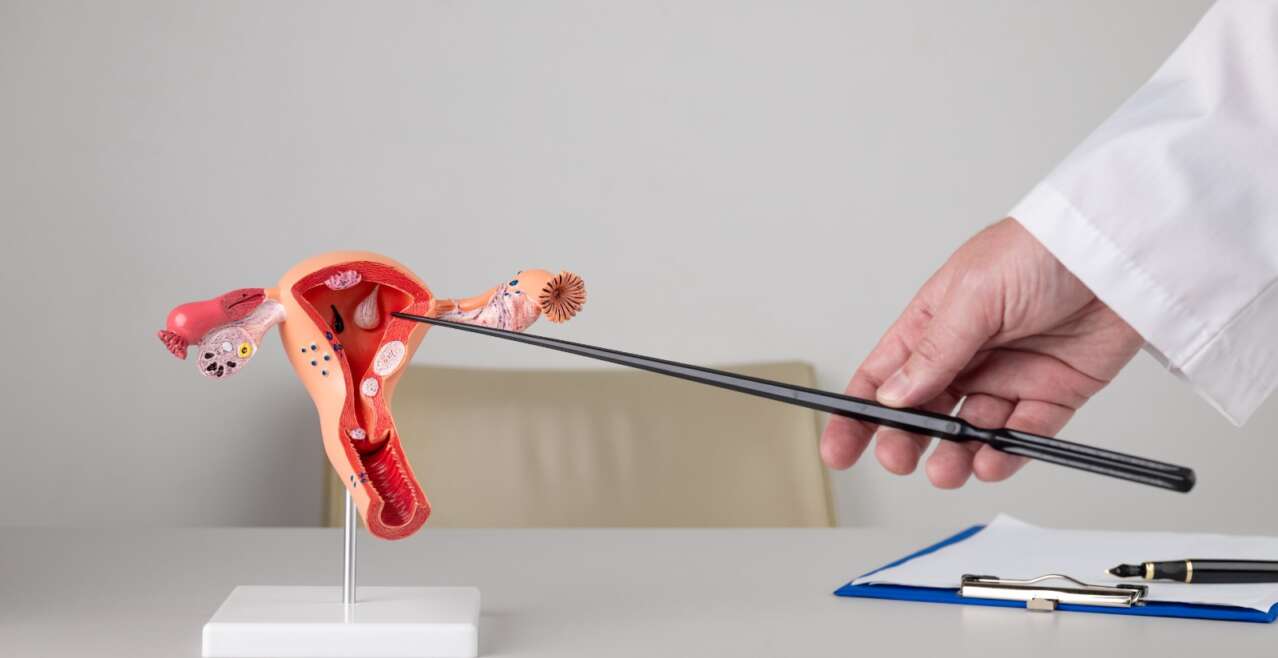Best Hysteroscopy Surgery in Indore:
Hysteroscopy is a minimally invasive surgical procedure used to examine the interior of the uterus. It involves the use of a hysteroscope, a thin, lighted tube equipped with a camera, which is inserted through the vagina and cervix into the uterus. This allows doctors to visualize the uterine cavity in real time and diagnose or treat various uterine conditions. Hysteroscopy can be diagnostic, therapeutic, or a combination of both, depending on the patient’s needs.
Causes for Hysteroscopy
Hysteroscopy is typically performed to investigate or manage a range of uterine conditions and symptoms. Some common reasons include:
- Abnormal Uterine Bleeding: Persistent heavy bleeding, irregular bleeding, or spotting between periods can indicate issues such as fibroids, polyps, or endometrial hyperplasia. Hysteroscopy helps diagnose the underlying cause.
- Infertility: For couples struggling to conceive, hysteroscopy can identify uterine abnormalities that may be contributing to infertility, such as structural anomalies or intrauterine adhesions.
- Recurrent Miscarriages: Women with a history of recurrent miscarriages may undergo hysteroscopy to detect and address any uterine abnormalities that could be impacting pregnancy outcomes.
- Endometrial Polyps or Fibroids: These benign growths can cause bleeding, pain, or other symptoms. Hysteroscopy can be used to visualize and remove them.
- Intrauterine Adhesions: Conditions like Asherman’s syndrome, where scar tissue forms inside the uterus, can be evaluated and treated with hysteroscopy.
- Postmenopausal Bleeding: Any bleeding after menopause should be investigated, and hysteroscopy can help diagnose the cause, including potential endometrial cancer.
Symptoms Indicating the Need for Hysteroscopy
Patients may be referred for hysteroscopy if they experience symptoms such as:
- Abnormal vaginal bleeding, including heavy periods, spotting, or bleeding between periods
- Painful periods or pelvic pain
- Difficulty conceiving or unexplained infertility
- Recurrent miscarriages
- Unusual discharge or bleeding after menopause
Diagnosis and Treatment: Hysteroscopy Procedure
Diagnostic Hysteroscopy
Diagnostic hysteroscopy is performed to evaluate the uterine cavity for abnormalities. The procedure involves inserting the hysteroscope through the vagina and cervix into the uterus. The camera on the hysteroscope allows the gynecologist to view the uterine lining and diagnose conditions such as fibroids, polyps, or abnormal growths.
Therapeutic Hysteroscopy
Therapeutic hysteroscopy is used for both diagnosis and treatment. During this procedure, instruments are passed through the hysteroscope to treat identified conditions. Common therapeutic interventions include:
- Polypectomy: Removal of endometrial polyps that may be causing symptoms.
- Myomectomy: Removal of uterine fibroids that can lead to bleeding or pain.
- Endometrial Resection: Removal of abnormal endometrial tissue in cases of hyperplasia or to treat bleeding disorders.
- Adhesiolysis: Release of intrauterine adhesions (scar tissue) to restore normal uterine function.
Procedure and Recovery
Hysteroscopy is usually performed on an outpatient basis, meaning that patients can go home the same day. The procedure is often done under local anesthesia, though general anesthesia may be used in certain cases.
Preparation:
- Pre-Procedure Evaluation: A gynecologist will review the patient’s medical history, perform a physical examination, and may conduct imaging studies or lab tests as needed.
- Avoiding Menstrual Periods: Ideally, hysteroscopy should be scheduled when the patient is not menstruating to ensure better visualization.
During the Procedure:
- The patient is positioned on an examination table, and the hysteroscope is inserted through the vagina and cervix.
- The uterus is gently distended with a fluid (saline or carbon dioxide) to provide a clear view.
- The gynecologist examines the uterine cavity and performs any necessary procedures.
Post-Procedure Care:
- Recovery: Most patients experience mild cramping or spotting following the procedure. Over-the-counter pain relievers are usually sufficient for discomfort.
- Activity: Patients are generally advised to avoid heavy lifting and strenuous activities for a few days.
- Follow-Up: A follow-up appointment is typically scheduled to discuss the results, any further treatment if needed, and to ensure proper healing.
Hysteroscopy Surgery in Indore
For those seeking expert care, hysteroscopy surgery in Indore is available at several reputable gynecological clinics. Indore’s top clinics offer state-of-the-art facilities and experienced gynecologists specializing in hysteroscopy. These centers provide comprehensive services, including both diagnostic and therapeutic hysteroscopy, with a focus on patient comfort and advanced care.
Why Choose Hysteroscopy Surgery in Indore?
- Expert Gynecologists: Leading gynecologists in Indore are highly skilled in performing hysteroscopy and addressing complex uterine conditions. They bring years of experience and expertise to ensure the best outcomes.
- Advanced Technology: Clinics in Indore are equipped with the latest hysteroscopic technology, providing precise diagnostics and effective treatments.
- Comprehensive Care: From initial consultation to post-procedure follow-up, patients receive holistic care tailored to their specific needs, ensuring a smooth and supportive experience.
Hysteroscopy is a vital tool in diagnosing and treating a variety of uterine conditions, offering both diagnostic and therapeutic benefits. Whether you’re experiencing abnormal bleeding, struggling with infertility, or dealing with recurrent miscarriages, hysteroscopy can provide valuable insights and effective treatments. With advanced facilities and expert gynecologists, hysteroscopy surgery in Indore offers top-notch care, helping patients achieve better reproductive health and well-being. If you’re considering hysteroscopy, consulting a specialized gynecologist in Indore can guide you through the process and provide the best possible care for your condition.
